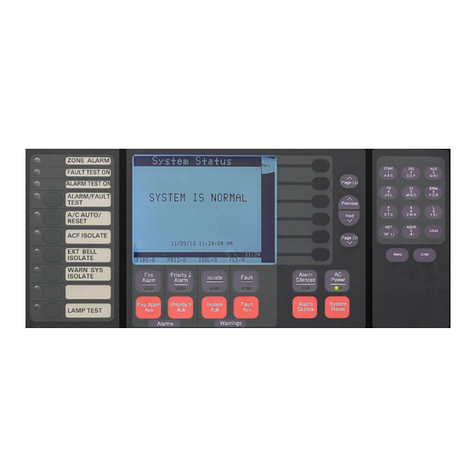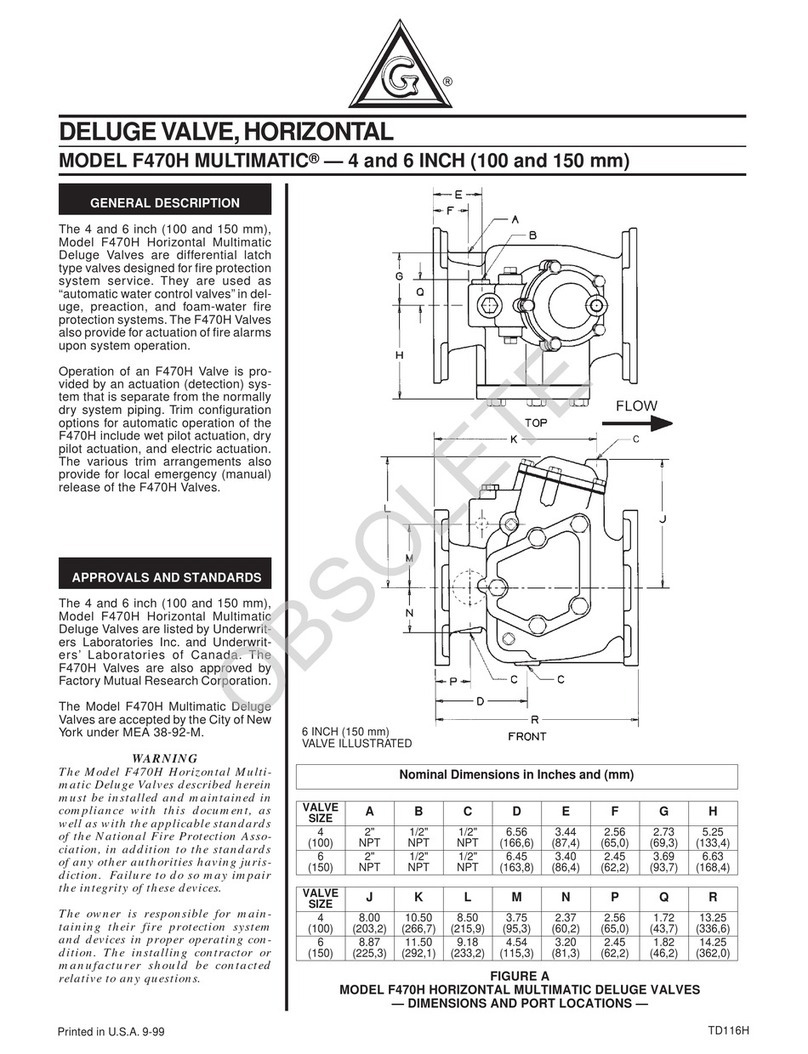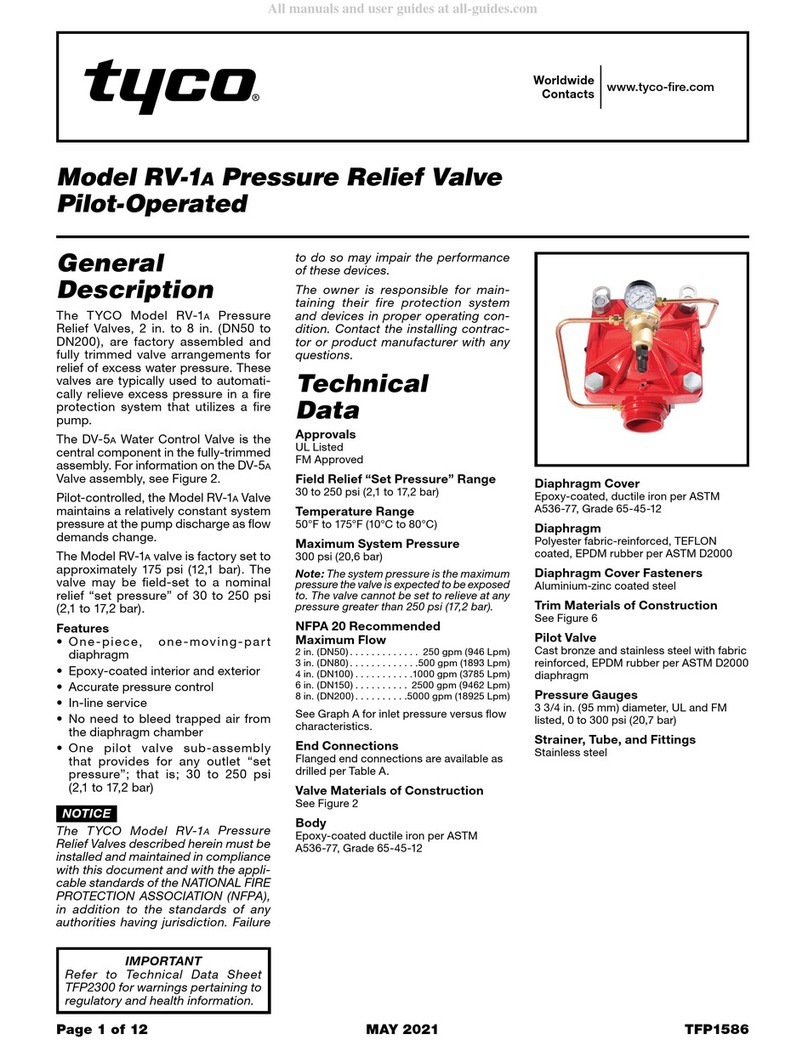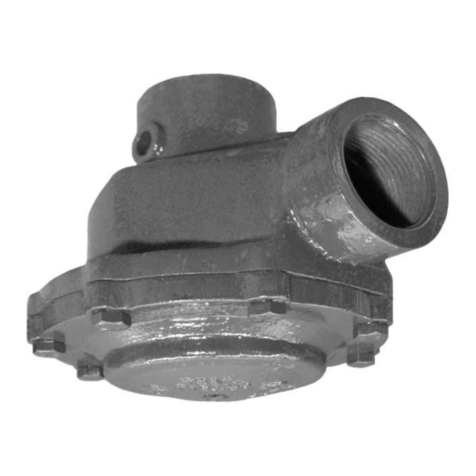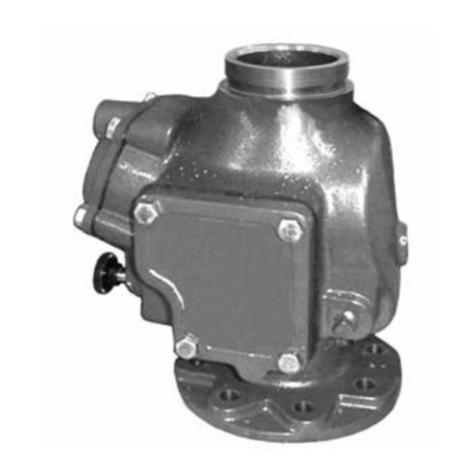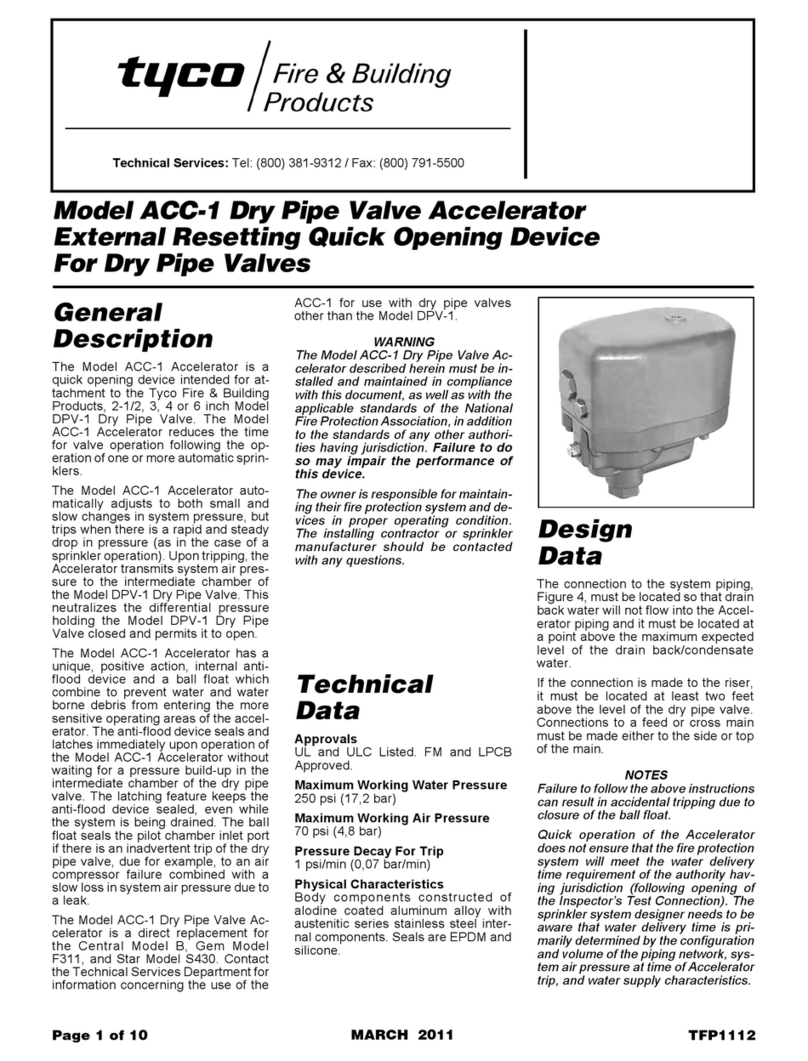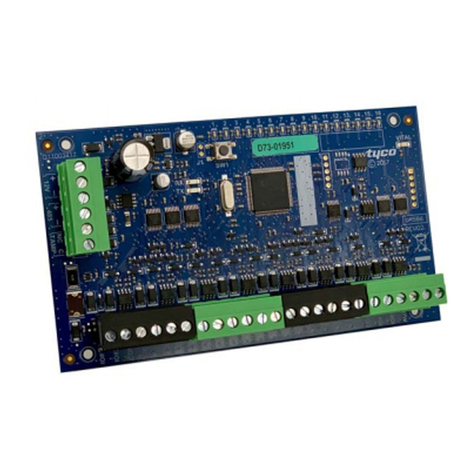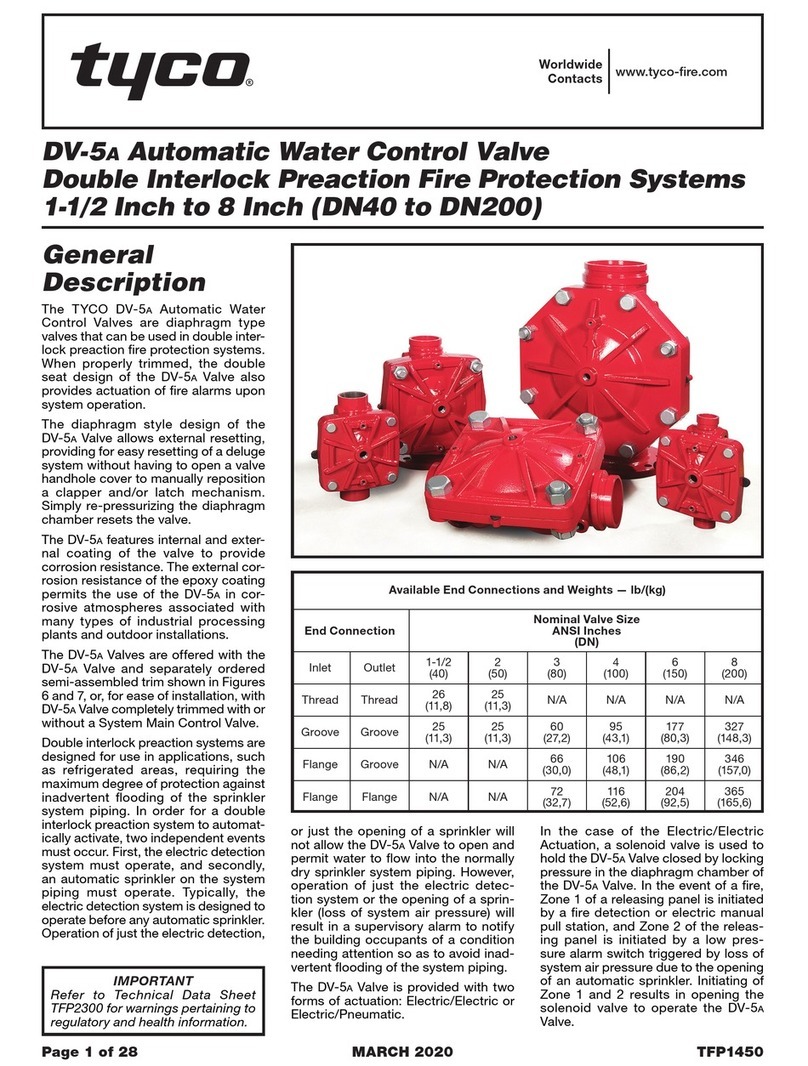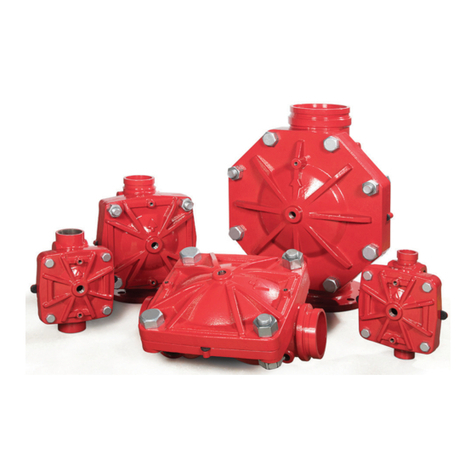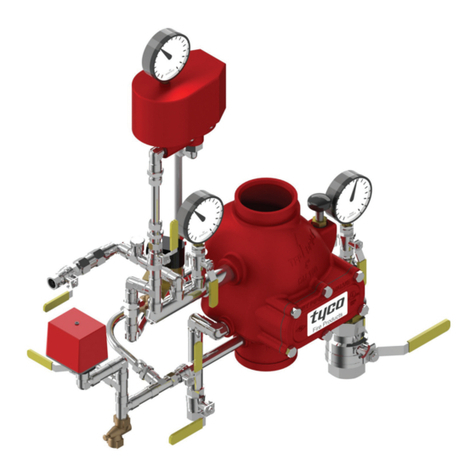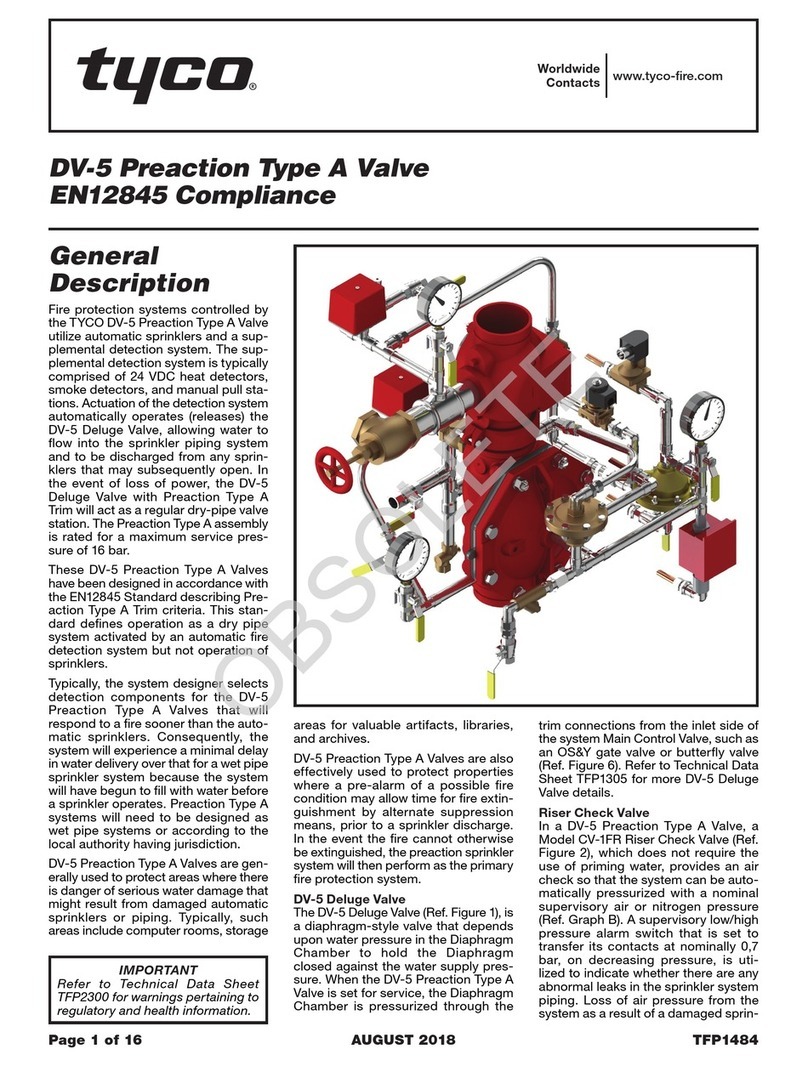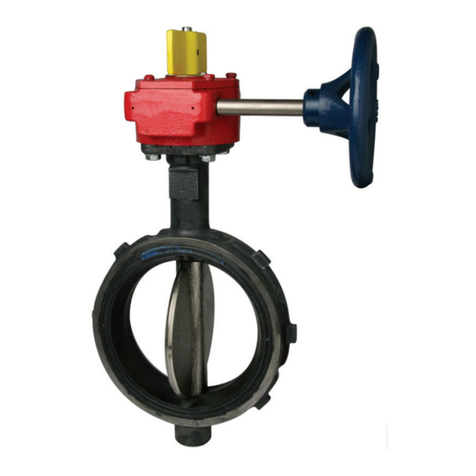
3. Open the Main Drain Valve. Check to see that the drain-
age water will not cause damage or result in dangerous
conditions.
4. Wait until the Supply Pressure Gauge reads zero pres-
sure and the sound of draining water has stopped be-
fore performing any maintenance work on the fire protec-
tion system.
Leakage from Alarm Line Drain
Follow the steps indicated below until water ceases to
flow from the alarm line drain. Check for the discontinu-
ation of the leakage after each step is complete.
1. Close the Alarm Control Valve and then open the Main
Drain Valve. Let the water flow for about 5 seconds and
then close the Main Drain Valve. This should flush any
loose debris that may have become trapped between
the Clapper Facing and the Seat Ring or in the seating
area of the Main Drain Valve. Re-open the Alarm Con-
trol Valve.
2. Repeat Step No. 1 if the rate of continued flow out of the
drain was noticeably reduced.
3. Open the Alarm Test Valve and allow water to flow for
about 5 seconds before re-closing the valve. This
should flush any loose debris that may have become
trapped in the seating area of the Alarm Test Valve.
4. Repeat Step No. 3 if the rate of continued flow out of the
drain was noticeably reduced.
5. Close the main control valve and open the Alarm Test
Valve to relieve the supply pressure. Temporarily re-
move the Alarm Test Tube and tube fittings, and replace
with two 1/2 inch NPT plugs. Open the main control
valve two full turns.
If the alarm line leakage is no longer present, the Alarm
Test Valve must be replaced or repaired before reinstall-
ing the Alarm Test Tube. If the alarm line leakage is still
present, then the water is likely leaking from the “Alarm
Connection”, refer to Step No. 6.
6. If it appears that the leakage noted in Step No. 5 is from
the Alarm Connection, drain the system in accordance
with the prescribed procedure. After the system has
been drained, remove the Handhole Cover.
While holding the Spring down by the coils, remove the
Hinge Pin. Remove the Spring and Clapper Assembly
(Items 5, 6, 7, and 8 in Figure 1).
7. Using a light, check for and remove any debris that may
have become lodged within the Seat Ring groove. In-
spect the Seat Ring seat for any damage. If the Seat
Ring has become dented across the seat then the Alarm
Check Valve will have to be replaced. It is impractical to
re-face a Seat Ring in the field.
8. Check for and remove any debris which may have be-
come lodged in the Clapper Facing. If a minor imperfec-
tion remains in the Clapper Facing, then turn it over after
thoroughly cleaning both surfaces with a clean cloth. Re-
place the Clapper Facing if necessary. Be sure to se-
curely re-tighten the retaining screw for the Clapper
Washer.
9. Replace the Spring and Clapper Assembly as shown in
Figure 1. Then while holding the coils of the Spring
down, re-insert the Hinge Pin. Be sure that the Hinge
Pin is pushed all the way to the rear of the valve.
10. Replace the Handhole Cover and Alarm Test Tube. Re-
turn the Alarm Valve to operation in accordance with the
steps described in the Setting Procedure section.
Clogged Alarm Line Drain
If water either does not flow or only dribbles out of the
alarm line drain during an alarm test, then it is likely that
the screen protecting the Restriction Assembly drain ori-
fice (Ref. Figure 4) has become clogged.
NOTE
A clogged alarm line drain will increase the likelihood of a
false alarm in a variable pressure system.
If the installation has a closed alarm line drain, first open
the union below the Drain Restriction and then remove
the Drain Restriction for cleaning by back-flushing the
screen. Re-install the Drain Restriction and re-assemble
the drain line.
If the installation has an open alarm line drain unscrew
the Drain Restriction from the Restriction Assembly and
clean the screen by back-flushing.
Loss of Excess System Pressure
In a variable pressure system, the System Pressure
Gauge should normally indicate a pressure greater than
that shown by the Supply Pressure Gauge. Also, the
value should be close to that of the peak supply pressure
which has occurred after the system was placed in serv-
ice.
NOTE
Loss of excess system pressure will increase the likeli-
hood of a false alarm in the case of a variable pressure
system.
Follow the procedure indicated below to correct a loss of
excess system pressure condition.
1. Check for signs of continued leakage from the alarm line
drain. If rust stains and/or water deposits indicate that
continued leakage has been taking place, take correc-
tive action according to the procedure described in the
sub-section entitled “Leakage From Alarm Line Drain”.
2. If there are no signs of continued leakage from the
alarm line drain, close the main control valve, open the
STAR SPRINKLER INC.
2-1.1.30 Page 7
FIGURE 7
ALARM VENT TRIM
(Ordered separately for use when a
Water Motor Alarm is not installed)
NO. DESCRIPTION . . . QTY. PART NO.
1 3/4" x 1/4" Bushing . . . 1 CH
2 3/32" (2.4 mm)
VentFitting.......1 920321002
3 1/4" Tube, 5 ft. long . . 1 CH
CH: Common Hardware
